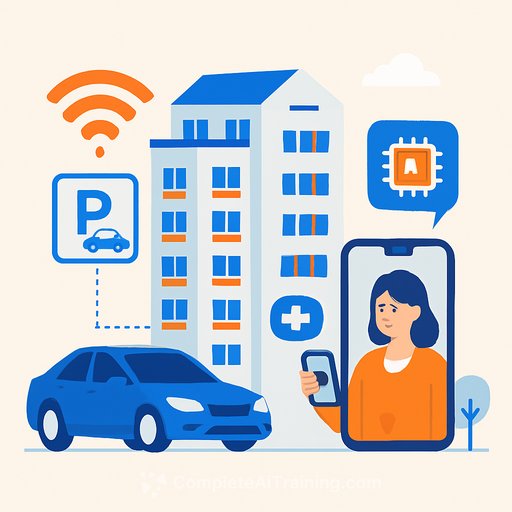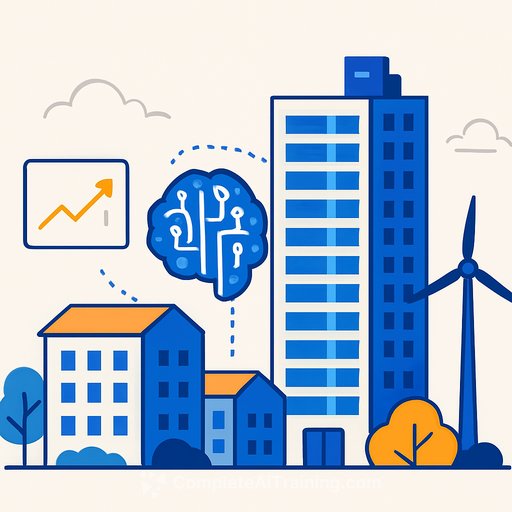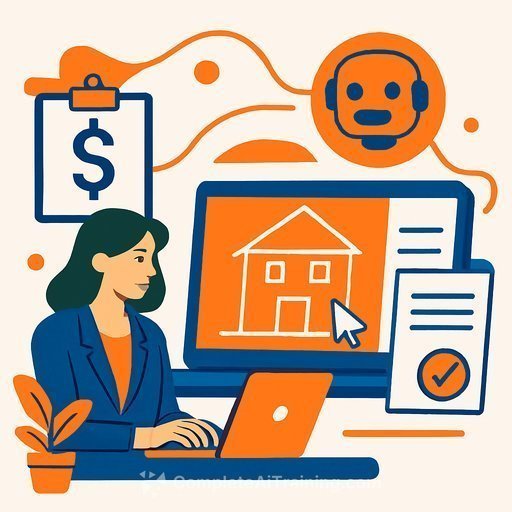AI apartments move from hype to handover: what developers and operators should do now
Construction companies are moving fast to embed AI into real projects - not pilots. The focus is clear: cut management costs, raise safety, and make daily living easier from the parking ramp to lights-out.
If you build, own, or operate multifamily assets, this shift changes specs, budgets, and resident expectations. Here's what's already on site - and how to make it work on your next project.
Smart parking as the new first impression
Samsung C&T is launching an AI-driven parking system at Raemian One Ferla (Bangbae-dong, Seocho-gu). It blends parking control, wayfinding, and EV charging with AI that learns resident habits and recommends spots near preferred cores or units.
Visitors get shortest-route guidance based on reservation data. It removes search time, smooths peak flows, and decreases minor incidents that frustrate residents and management alike.
Fire-aware garages and safer EV charging
HDC Hyundai Development's Seoulwon I-Park (Wolgye-dong, Nowon-gu) adds intelligent AI CCTVs for early fire detection. Thermal cameras near fast chargers monitor EV battery temperatures and cut charging if thresholds are exceeded.
This pairs well with evolving codes and best practices for energy storage and EV safety. For reference, see NFPA 855 guidance on energy storage systems here.
Context-aware homes that learn resident patterns
Seoul One I-Park adds an AI home agent that learns resident routines and complex building data to deliver energy management and community facility reservations. Voice wallpads use generative AI to hold natural conversations, even with layered requests.
Speaker recognition means the system can act on usage patterns per person. Expect fewer app taps and more hands-free control that actually gets used.
Gyeonggi-do's push for "zero management costs"
Gyeonggi Province set a bold target: zero energy costs by 2040 for 800,000 new apartments by combining renewables with AI control of cooling, heating, lighting, ventilation, and appliances. For existing stock, the "My Apartment AI Saving Project" is moving through demonstrations.
The effort is supported by the Ministry of Climate and Energy and Environment, with the Korea Energy Technology Evaluation Institute and the Herit Consortium leading R&D. Tech development wraps this year, with apartment pilots in Gwacheon and Gunpo next year. Details on KETEP can be found here.
Non-face-to-face senior care inside the complex
Daewoo E&C is preparing AI-enabled senior healthcare lounges in community spaces. Services will include self-checks, hospital connections, and remote consultations and prescriptions with doctors.
For developers, the callout is infrastructure: private rooms, secure data links, and clear workflows with medical partners. For operators, watch licensing and consent flows so services are compliant from day one.
Sleep-focused comfort that automates HVAC, lighting, and air
Hyundai Engineering & Construction developed an AI sleep-care system that analyzes sleep patterns and adjusts lighting, humidity, and ventilation in real time. First deployment is set for Hillstate Lake Songdo 4th Guest House, with future options offered at the unit level.
This is where wellness meets measurable outcomes: better comfort, fewer complaints, and smarter overnight energy use without resident micromanagement.
Digital twins for high-rise fire safety
GS Engineering & Construction plans to apply AI-based simulation (digital twin) to test thousands of fire scenarios under consistent conditions. The goal: optimize structure and MEP design and organize evacuation routes with hard data.
Initial rollout will start at the Seongsu Strategy first maintenance area. Expect this to influence early design decisions, not just late-stage checks.
What to spec right now
- Data backbone: unified sensor network (parking, EVSE, meters, IAQ, cameras), time-synced and accessible via open APIs.
- BMS/EMS integration: confirm protocols, write-back permissions, safety interlocks, and failover modes.
- Privacy and consent: clear resident opt-ins for voice, video, and sleep data; on-device processing where feasible.
- Cybersecurity: network segmentation for OT, credential management, and incident response plans tied to vendors.
- EV charging safety: thermal monitoring, automatic cutoffs, and maintenance SOPs tied to alerts.
- Visitor workflows: reservation-based routing, temporary credentials, and delivery access rules.
Operator playbook: KPIs and ROI
- Energy and demand: kWh per unit, peak shaving results, and HVAC runtime reductions versus baseline.
- Safety: time to detect and respond (garage and common areas), false alarms, and incident close-out rates.
- Resident usage: voice command adoption, community reservation throughput, and help-desk ticket trends.
- Parking efficiency: average time-to-park, stall utilization by zone, and EV charger uptime.
- Maintenance: predictive alerts caught vs. failures, parts inventory turns, and labor hours saved.
Procurement and delivery tips
- Write AI use-cases into specs, not just "smart" features. Define inputs, automations, safety limits, and data ownership.
- Pilot high-impact zones (parking, HVAC scheduling, EV) before full deployment. Keep rollback plans ready.
- Choose vendors that support open standards and give you admin access. Avoid siloed portals without API support.
- Budget for tuning: plan a 60-90 day stabilization period post-handover with clear SLAs.
Bottom line
AI in housing is past the concept phase. Parking guidance, EV safety, energy automation, senior care, and sleep-focused comfort are being delivered in real projects across Korea.
If your team needs to skill up for specs, integration, or vendor selection, see curated AI courses by job role here. The firms that lock in data infrastructure and operational discipline now will enjoy lower costs and happier residents later.
Your membership also unlocks:






